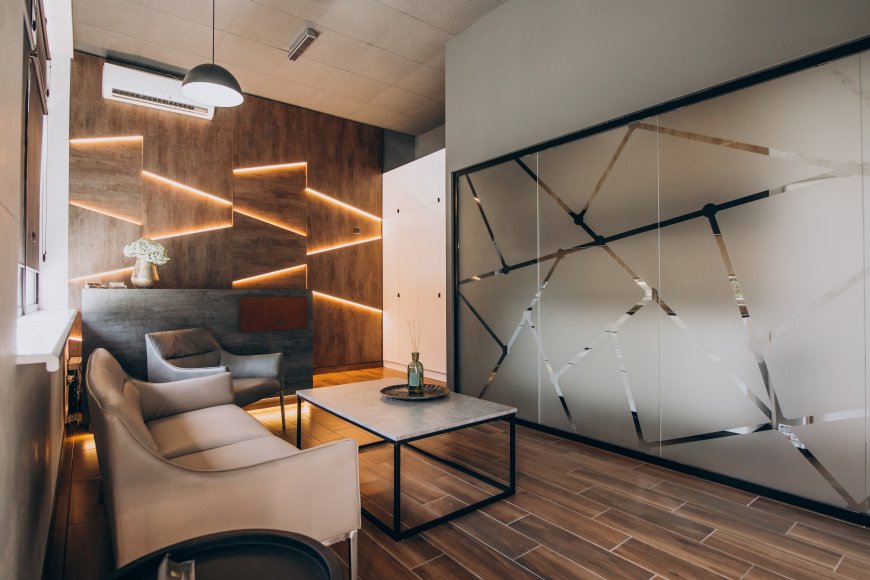Innovative Living: How Interior Designers in Chennai Are Changing Homes
Explore how interior designers in Chennai transform homes with personalized, wellness-focused, and culturally inspired design experiences.

I. Introduction: Design with a Purpose
A. Evolving expectations in home interiors today
Homes today are no longer just about four walls and a roof—they are deeply personal spaces that need to serve multiple roles. From being calming sanctuaries after a long day to becoming efficient work-from-home hubs, the modern home must adapt to evolving needs and changing lifestyles. Design has moved beyond mere decoration; it’s now about creating environments that improve how we live, feel, and function every day.
B. Introducing the role of interior designers in Chennai in shaping modern lifestyles
As expectations rise, so does the need for thoughtful, experience-driven interiors. This is where interior designers in Chennai come in—not just as stylists, but as problem-solvers who understand how to fuse function with finesse. Whether optimizing tight layouts, integrating smart tech, or customizing furniture, these professionals help homeowners reimagine their spaces to suit today’s dynamic living. With an eye for detail and a deep understanding of design psychology, they’re crafting homes that don’t just look good—but live better.
II. Personalized Living Experiences
A. How designers tailor environments to daily routines and preferences
A well-designed home reflects more than taste—it mirrors your daily rhythm. Skilled interior designers don't just focus on aesthetics; they study how you live. From planning morning-efficient kitchens for early risers to designing cozy reading nooks for book lovers, they customize each space to complement your habits. By blending style with routine, they make your home an extension of you.
B. Using layouts, colors, and textures to tell your story
Your home should speak your language—and interior designers use layout, color schemes, and textures to do exactly that. A neutral palette with soft fabrics might reflect a calm, minimalist lifestyle, while bold colors and layered textures can showcase vibrancy and creativity. Each choice becomes a brushstroke on the canvas of your life, resulting in a space that doesn’t just look beautiful but feels genuinely yours.
III. Wellness-Focused Interiors
A. Natural lighting, ventilation, and ergonomic design
Today’s interior design goes beyond style—it supports your health. Designers are prioritizing natural light and cross ventilation to improve air quality and mood. From positioning furniture to enhance daylight to using ergonomic chairs and kitchen heights tailored to your posture, every detail is planned to reduce strain and boost well-being. It’s design that feels as good as it looks.
B. Mindful spaces that promote relaxation, clarity, and focus
A well-planned home can become your sanctuary. Whether it’s a serene meditation corner, a reading zone with soft lighting, or a decluttered study with calming tones, mindful interiors help create emotional balance. Designers craft these spaces with the intention of promoting mental clarity, reducing stress, and encouraging focus—turning everyday environments into zones of peace and productivity.
IV. The Rise of Multi-Sensory Design
A. Touch, sound, and scent in home aesthetics
Design today isn't just about what you see—it’s about what you feel. From plush fabrics underfoot to textured wall finishes and natural materials like cane or linen, the sense of touch adds depth to interiors. Designers are also using acoustic panels, ambient soundscapes, and even curated home fragrances to enhance mood. It's a symphony of senses that turns homes into immersive sanctuaries.
B. Interior designers creating immersive environments for better living
By tapping into all five senses, interior designers are crafting homes that feel as good as they look. Soft lighting paired with calming music, scented corners in entryways, and layered textures throughout each room create a fully immersive experience. This multi-sensory approach not only elevates aesthetics but also supports emotional wellness and everyday comfort in subtle, powerful ways.
V. Creative Zoning for Dynamic Lifestyles
A. Defining areas for work, leisure, fitness, and more
Gone are the days of single-purpose rooms. Today’s homes are expected to multitask just like their occupants. Interior designers cleverly use creative zoning—through rugs, lighting, shelving, or partial partitions—to carve out distinct spaces for work-from-home setups, reading nooks, yoga zones, or gaming corners. Each zone serves a purpose without needing extra square footage, making everyday living smoother and more organized.
B. How spatial flexibility adds long-term value
Flexible design isn’t just a trend—it’s a future-ready solution. Designers are embracing modular furniture, sliding panels, and dual-use areas that can evolve as your lifestyle does. A guest bedroom can transform into a study; a balcony can become a mini-gym. This adaptability not only maximizes your current use of space but also increases the long-term value and functionality of your home.
VI. Style That Speaks: Artistic and Cultural Integration
A. Blending personal art, heritage items, and design themes
Your home should be a canvas that tells your story. Interior designers help you infuse personality into your space by integrating cherished heirlooms, local art, travel collectibles, or traditional motifs. Whether it’s a vintage swing in the living room or a gallery wall of family portraits and tribal artwork, these elements create a soulful environment that feels both personal and timeless.
B. Unique designer projects that reflect individuality
From hand-painted accent walls to custom-designed puja units, designers are bringing deeply personal ideas to life. Some projects showcase a homeowner’s passion for music through sound-inspired design elements, while others weave in cultural roots using handmade tiles or calligraphy. The result is a home that’s not just aesthetically pleasing, but emotionally resonant—designed to reflect who you truly are.
VII. From Consultation to Completion: The Designer’s Role
A. An inside look at process, planning, and project timelines
The journey with an interior designer begins long before the first tile is laid. It starts with understanding your lifestyle, preferences, and needs. Designers then move into concept creation, material selection, and layout planning, followed by detailed 3D renderings and execution schedules. From mood boards to final walkthroughs, every stage is mapped out for clarity and precision, ensuring your dream space is delivered on time and on point.
B. Collaborative tips for a seamless experience with interior designers in Chennai
To get the best out of your designer, open communication is key. Be clear about your budget, priorities, and must-haves. Ask questions, stay involved, and provide feedback during key milestones. The most successful projects are built on mutual trust and flexibility—allowing creativity to flourish while staying grounded in practicality. With the right partnership, working with interior designers in Chennai becomes an enjoyable and rewarding transformation.




























































































































































